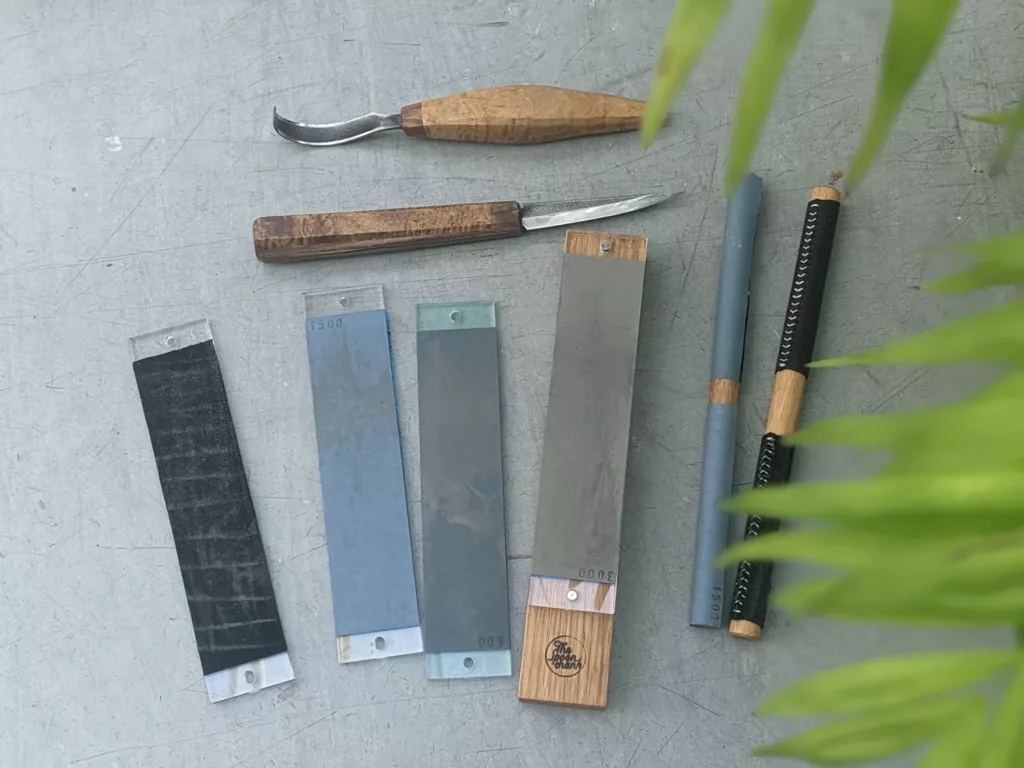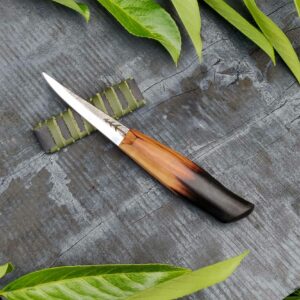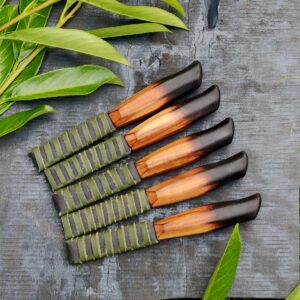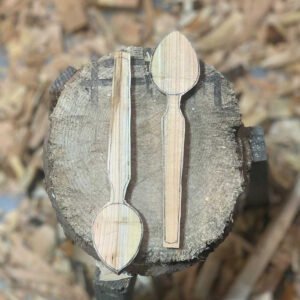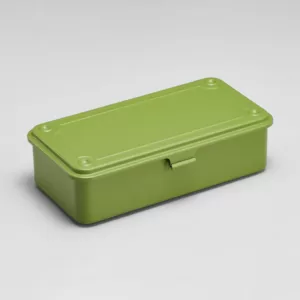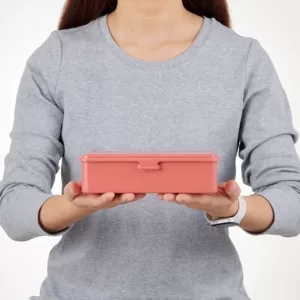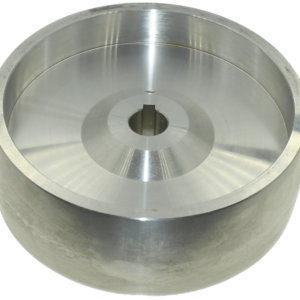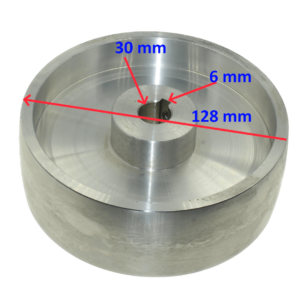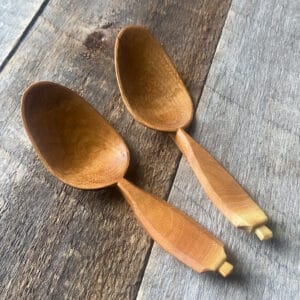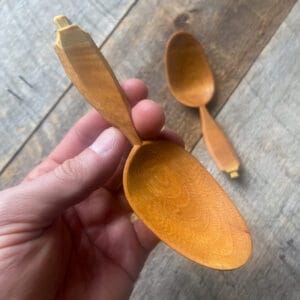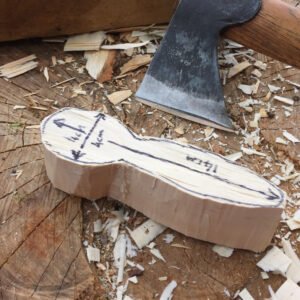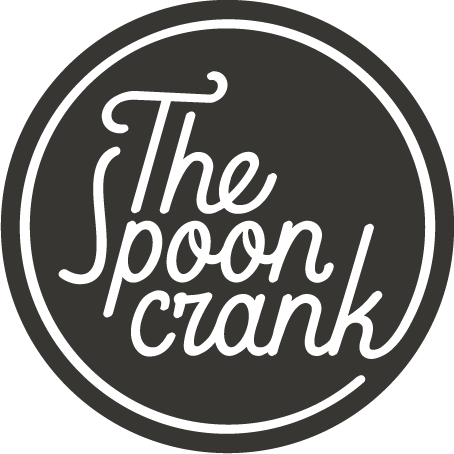Hi Nick, thanks for joining us today. Could you start by telling us a bit about yourself and your background?
Of course! My name is Nick Vorstermans, I work under the name Studio Critical: and I’m based in Manchester in the United Kingdom. I grew up in Richmond Hill, Canada near Toronto. As a kid I loved to explore the nearby creek and go on adventures in the woods. I had access to a community woodworking shop that my Dad ran. It was one part of supporting a community of adults with disabilities. So I guess I’ve always had access to tools and wood to play around with and learned about woodworking and craft as something that could and should be inclusive for everyone.
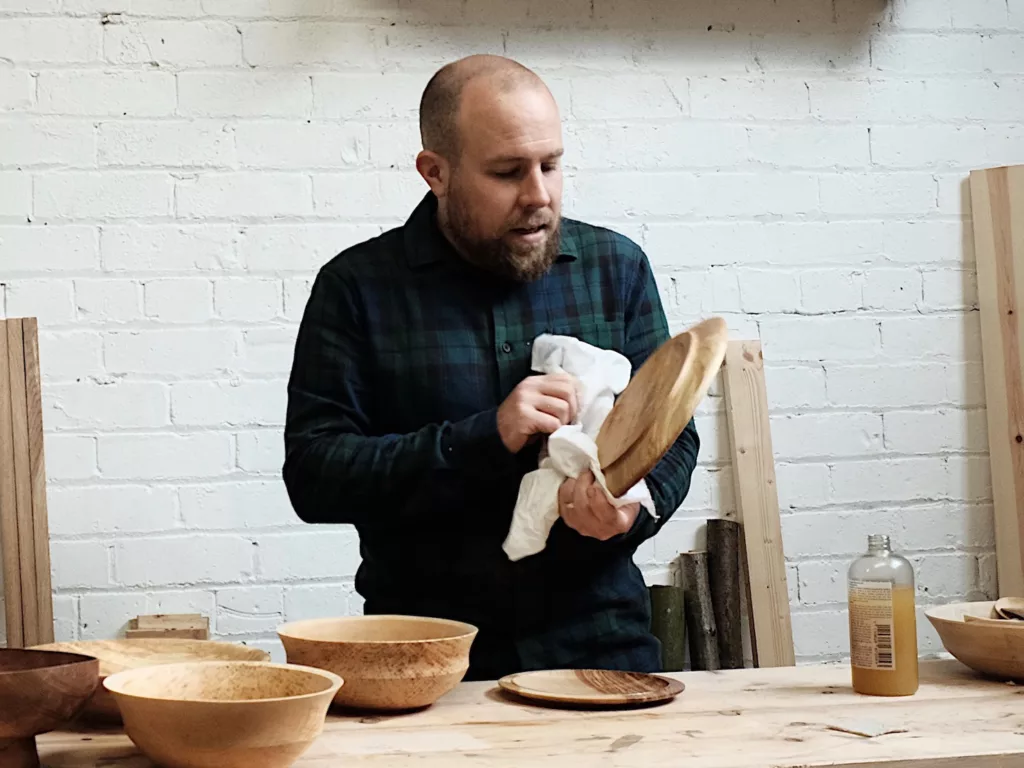
In my early 20s I enrolled at the BCIT (British Columbia Institute of Technology) while living in Vancouver and learned how to build cabinetry and furniture, from there I went on to work in 1000 Parker Street, an amazing warehouse turned studio building in Vancouver, Canada. While working for a variety of furniture makers in the building, in 2008 I was encouraged to start my own thing. In 2016 my partner got a job in Manchester and we moved to the UK, where I enrolled in the Manchester School of Art and got my MA in design. This opportunity prompted me to think more about how people interact with the furniture and objects that I make and set me on the path towards spoon carving and the approach I take today.
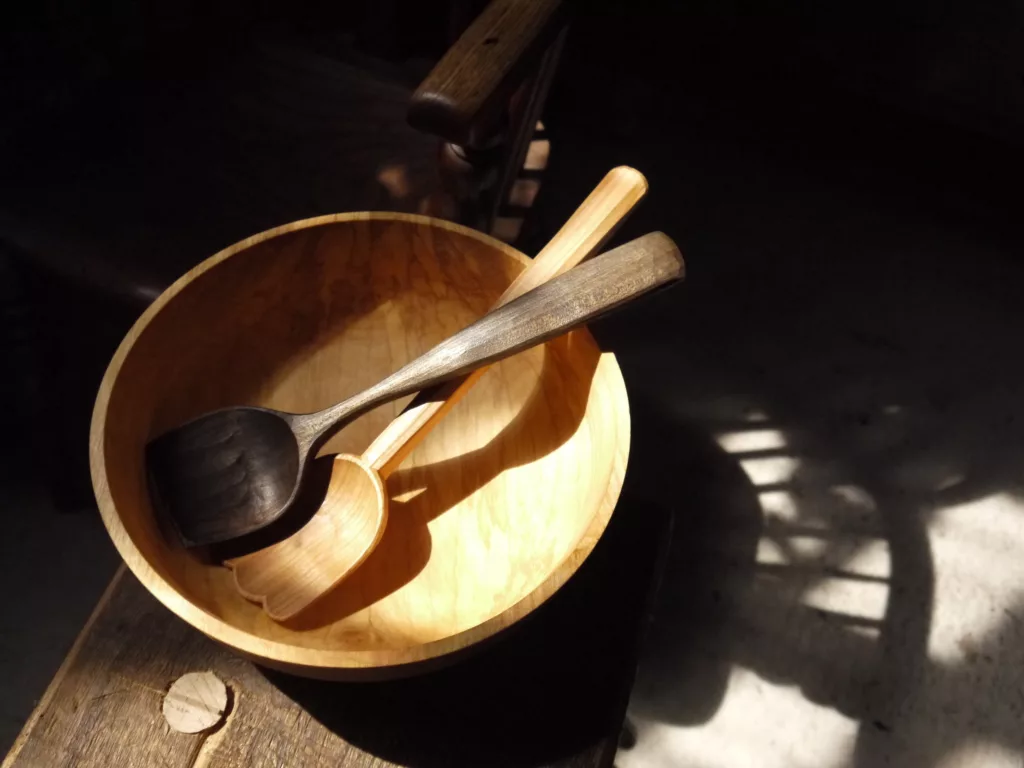
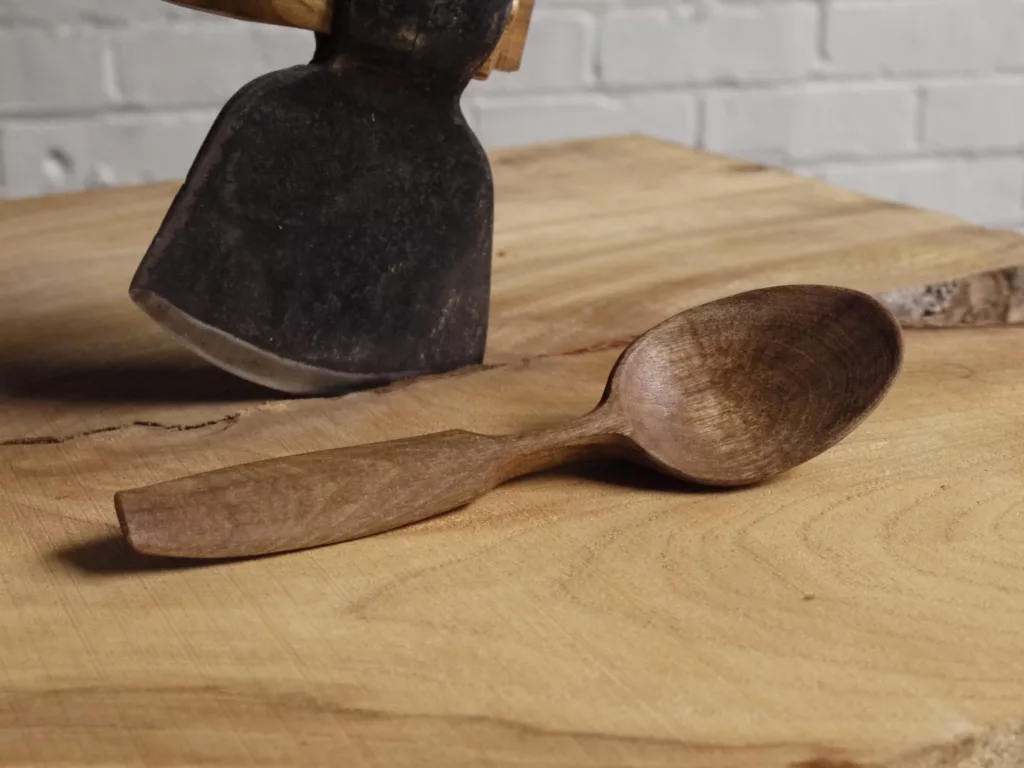
Spoon carving seems like a unique and calming craft. What drew you to it, and how long have you been practicing it?
Like so many other people I took up spoon carving during the pandemic. I was just about to return to work from paternity leave when the pandemic hit. So instead I spent most of lockdown walking in parks with my then 1-year-old. I had tried spoon carving before but didn’t stick with it as I hadn’t yet realised people used greenwood and had been trying to carve offcuts of kiln dried wood! I can’t remember where, but I saw something about greenwood carving and I started grabbing bits of fallen branches in the park and haven’t looked back! Spoon carving hooked me in with it’s ability to be done most anywhere, it gave me something to calm my mind and keep my hands busy during a difficult period and continues to be a calming and therapeutic presence in my life.
Can you share one of your top spoon carving tips and explain why it’s important?
Create a systematic way to carve your spoons. I carve to my pencil line first, I then carve the back of the spoon, then onto the top of the spoon and finally I go over the spoon to add facets and finesse. This allows you to gain muscle memory as well as makes your carving more consistent and intentional. Obviously there will be a bit of back and forth in there but I find carving in this way helps me to achieve a more consistent outcome.
That sounds like a valuable technique. How about finishing your spoons? Do you have a preferred method, and do you like to decorate them?
Most of the time I make sure the wood I’m using has sat and mellowed for at least a few months, this helps it carve smoother and adds so much beauty to the colour of the wood. I always carve a spoon in one go, if I have the time. I used to carve it rough, let it dry and then finish-carve it, but I feel if you age the wood first this is unnecessary. Importantly I find it stops me from having a giant pile of partially finished spoons. Once dry I finish my spoons with Parr’s Beeswax oil.
Decoration wise I’m always experimenting and learning new processes, I love to kolrose if the spoon is calling out for it, milk paint is always fun, and I’ve just bought a chip carving blade blank from Hewn and Hone that I’m excited to get using, never stop learning!
With all of the decoration techniques I use, I find it best to just give it a go, you don’t even have to practice on a spoon, carve a blank from bit of wood and try kolrosing with the tip of your knife, or grind an old drill bit down to make a kolrosing blade. I’m a huge fan of trying new techniques with the tools/materials that you have on hand. If you find you’re doing a lot of kolrosing, then invest in a nice knife to do just that. Same with milk paint, you can buy tiny sample packs of the paint for a relatively cheap price and just give it a go.
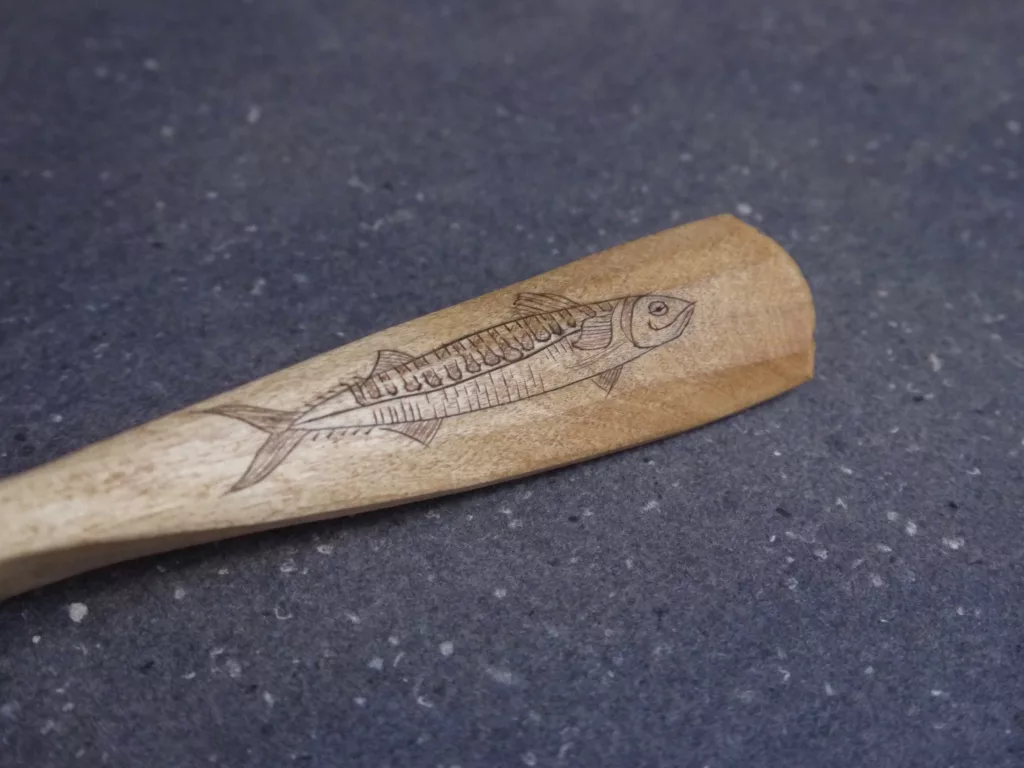
What would you say are the three most essential tools in your carving kit, and why are they crucial to your craft?
This is an easy one, axe, knife and hook knife! You can’t carve a spoon without them. When I started out I used a £10 axe that I re-filed to a carving bevel and a Morakniv sloyd and hook knife. Now I have tools made by independent makers and they are lovely, but I wouldn’t say they make me a better spoon carver, they’re just nicer to use. (Shout out Belzeboo Crafts for his beautiful knives! Thanks Miguel!)
Can you share your favorite part of the spoon carving process and why it resonates with you?
I’d say using it, but that’s not part of the carving process! My favourite part is carving the top shape of the handle, that’s when I find the spoon really comes to life. But also axing out, and also putting a finish on and seeing the wood pop and using it. It’s all my favourite part!
Sharpening tools is often a crucial aspect of woodworking. How do you approach sharpening, and why is it essential in your craft?
When I went to school and was learning woodworking in Canada, the first thing we did was to spend a full week sharpening our bench tools. So for me, it’s a fundamental part of any woodworking. Sharp tools are safer, cut cleaner, and are more fun to use. I’ve used everything from sandpaper and a wood block to large and messy wet stone systems. As you know Dio, I now use “The Sharpening Kit“, which is now available in the UK through my website, so obviously I would recommend it! No matter which system you use, if the outcome is a sharp knife, then it’s the right sharpening system.
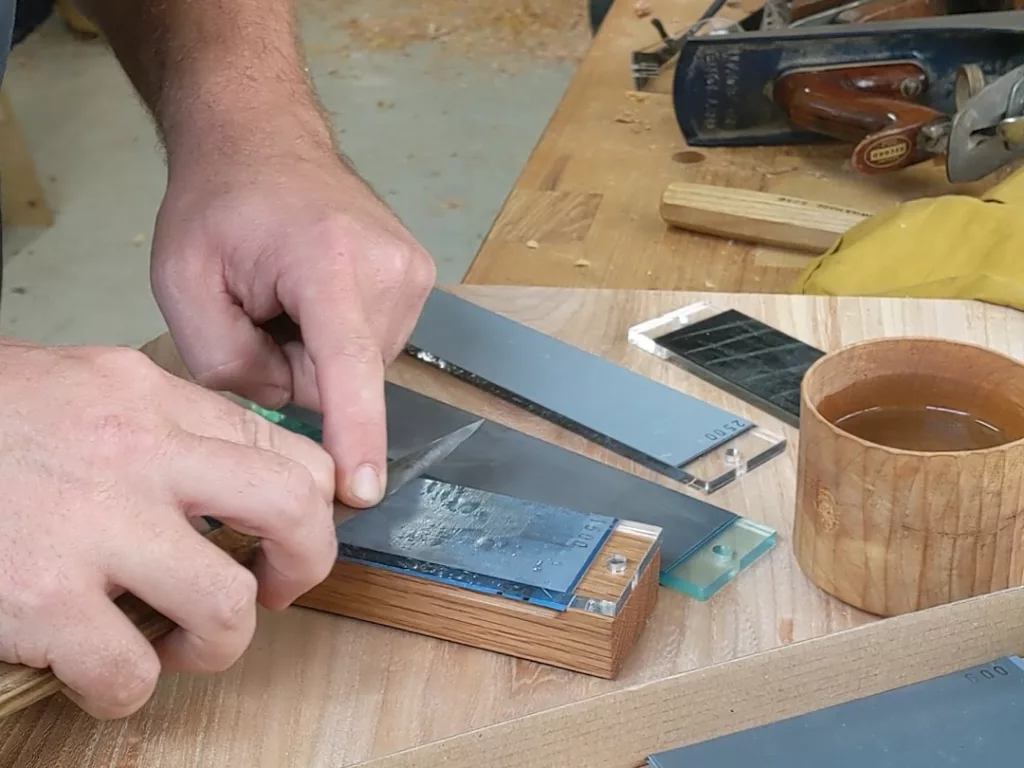
Where do you find green wood for your carving, and do you have any tips for sourcing it?
I don’t find my wood in one specific place, but it often comes from trees being felled by the local council and I’m either passing by and see them or get a message from a friend alerting me to wood that has been cut. So my tips would be, always keep your eyes out, let your friends know that you’re on the look out for wood and learn the sound of a chainsaw so you can head towards it when it beckons. I always keep my eye out when I’m riding my bike through parks and green spaces as trees often drop branches or they’ve been cut and left there by the council. And like many spoon carvers, people often offer me wood, so if you’re near Manchester and have wood, let me know!
Do you primarily carve at home, or do you have other favorite carving spots? Could you tell us more about where you like to carve and why?
I actually carve all over the place. I have a studio space where I keep my tools, work, and teach workshops, and this is where I do all of my axing out. However I often carve the blanks at home, in the studio, or at the Manchester Craft and Design Centre where I sell some of my work in a friend’s studio (Shout out Jane Blease – Studio #25). One thing I love about spoon carving is how portable it is. My partner often travels for work and recently my daughter and I have got to join her for extended periods in Greece and Chile, I was able to bring my tools and carve new woods in a new country which was both fun and inspiring.
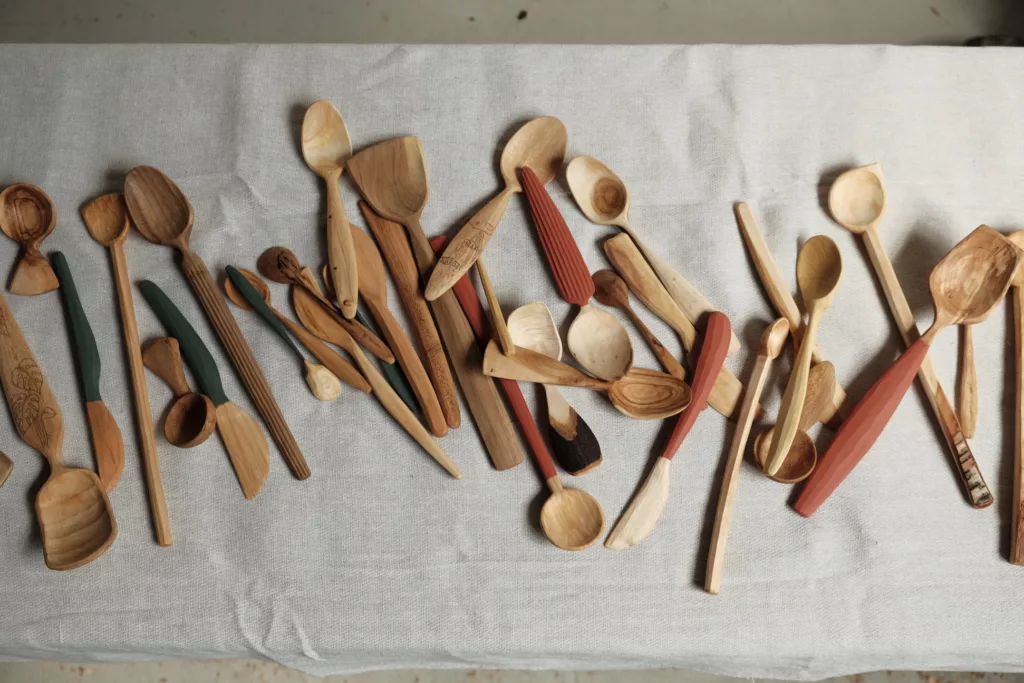
Safety is a significant concern in woodworking. Have you ever had any lessons from accidents while carving? How do you minimize risks in your craft?
In spoon carving as with any woodworking, it’s as if almost as you’re cutting yourself you think, “why did I do that?” I find that most cuts happen when doing something we know we shouldn’t have. I try and counteract this by proactively thinking about what could go wrong and not doing that. Also using the correct grips and body mechanics to make sure that if there is a slip, the knife/axe isn’t going to end up hitting others or myself.
Do you have a particular philosophy or ethos when it comes to the craft of spoon carving and hand-carved wooden spoons?
Have fun! It’s an amazing thing to be able to carve a useful and beautiful object from a piece of a tree, so enjoy the process. From collecting wood to using wood spoons just enjoy the whole journey. I love that it’s a form of woodworking that is accessible to everyone, the tool kit is minimal and there’s trees almost everywhere!
Collaboration among makers can be inspiring. What are your thoughts on collaborative work in the maker community?
I love collaborative work, but saying that I understand that since most makers work as individuals it can be difficult to work collaboratively. This is why facilitating collaborations is important, they usually don’t just happen by accident. I’ve really enjoyed carving with others and passing the spoon around every so often, the outcome is surprising and fun. As well, at least for me I find it tough to give up control over my creative process, so working collaboratively is a great way to learn how someone else works and learn from them.
Can you explain why the crank is an important design feature in spoons, and what’s your process for creating it?
Crank is what makes a spoon comfortable to use. If you’ve ever used a metal spoon that felt wrong and bent it into a shape that felt better, you were adjusting the crank. When I’m axing in crank it’s important to make sure that the end of the bowl has the grain running with it. Which means lining up the wood fibers parallel to the top of the bowl so that you follow their strength, otherwise you end up with a spoon with a weak spot. So I’ll axe down the top of the bowl with the grain (looking for wood with a slight bend helps here), then it can be fine tuned with knife work. It’s important to test the ergonomics of a spoon as you’re carving it, that way you can get a feel for what works. Enough crank is a tricky one because each type of spoon needs a different amount of crank. It all depends on what it’ll be used for, a teaspoon doesn’t need much crank at all where as a ladle needs a lot and will need to be made from a curved branch.
How can we make spoon carving and green woodworking more accessible to a wider audience?
When you first asked my to carve blanks and billets for The Carvers Without Borders initiative I was hesitant to the idea, but the more I thought about it the better it sounded. I have access and the means to collect green wood so why not share it with those that don’t? Not everyone has the ability or the means to collect and process wood for spoon blanks so initiatives like TCWB make spoon carving more accessible to a wider community I also enjoy teaching and sharing knowledge of spoon carving that way, making sure the skills are more open and accessible to others. As we speak I’m setting up a YouTube page where I’ll be posting carving and other wood related videos, by doing this I hope to share my knowledge as far as possible. With the many greenwood carving festivals, spoon clubs and with the popularity of spoon carving rising, I think spoon carving is becoming accessible to more people all the time.
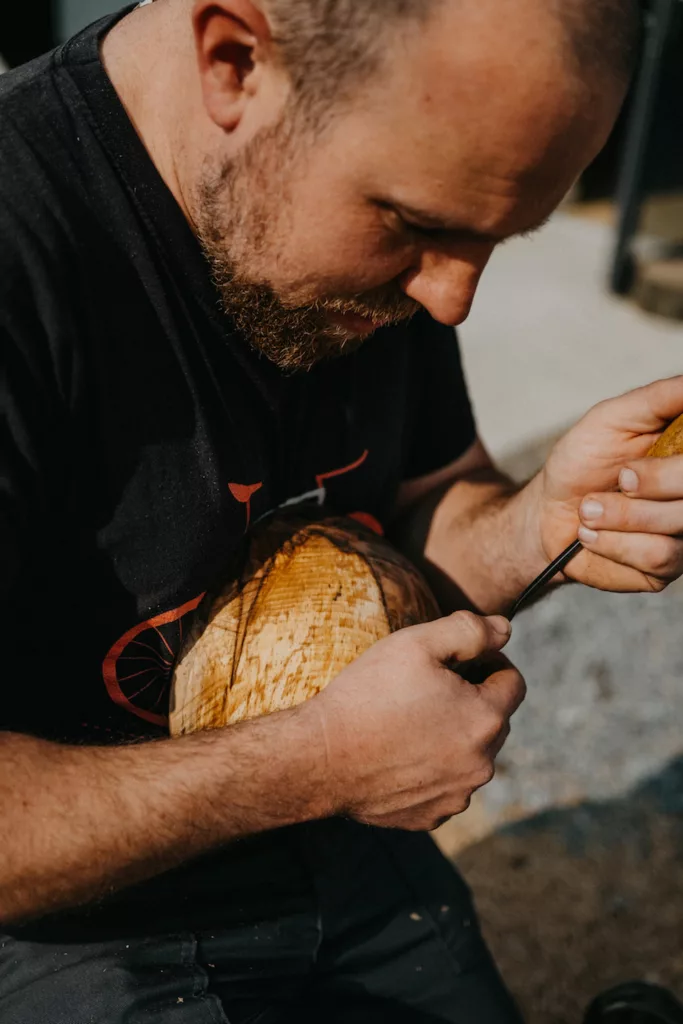
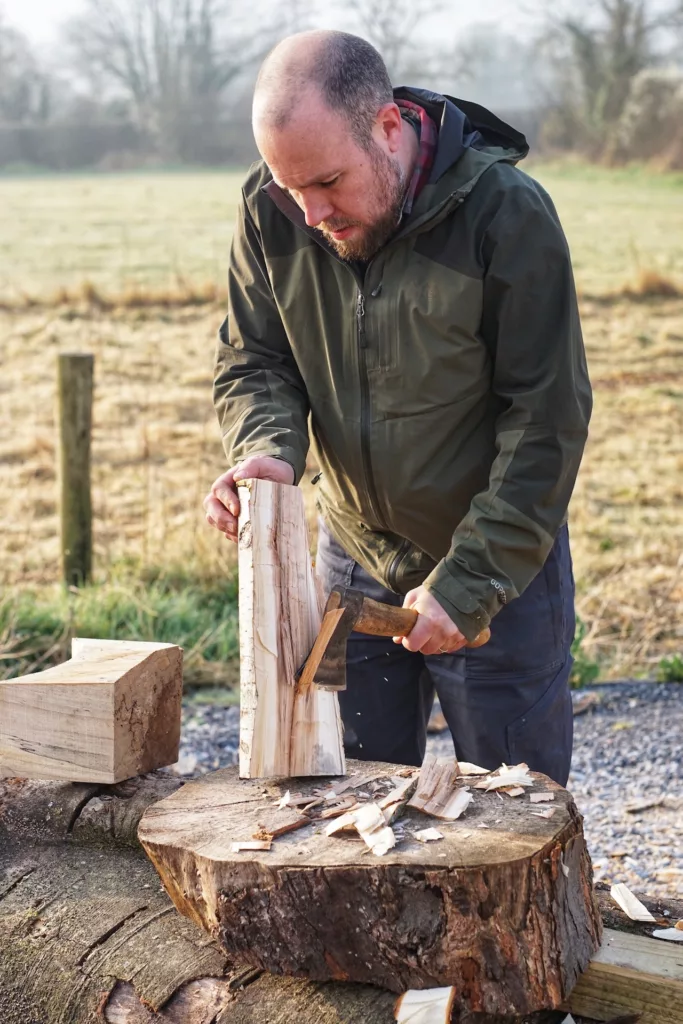
Is there anything else you’d like to share with us?
Keep on carving! Also don’t forget to share to beauty of spoon carving with your family, friends and strangers: we’re always looking for new converts ☺
Thank you, Nick, for sharing your insights and experiences with us today! That wraps up our conversation with Nick Vorstermans, a talented spoon carver based in Manchester, UK. Visit his website studiocritical.com and follow him on Instagram here.
Since 2023, Studio Critical: is the UK 🇬🇧 supplier for The Sharpening Kit. You won’t need to worry about pesky duties or shipping delays. The Sharpening kit ships from Manchester directly to you. Order yours here.
After meeting at Spoonfest in 2022, Nick (Studio Critical:) and Dio (The Spoon Crank) hit it off and after carving many spoon blanks for The Spoon Crank, Nick’s axe was getting awfully dull. So rather than using the same old gungy mdf block with a bit of sandpaper wrapped around it, Nick tried out The Sharpening Kit, and there’s no turning back now. Simple, well made and practical it’s a super nice bit of kit that makes it a pleasure to sharpen you carving tools with.
